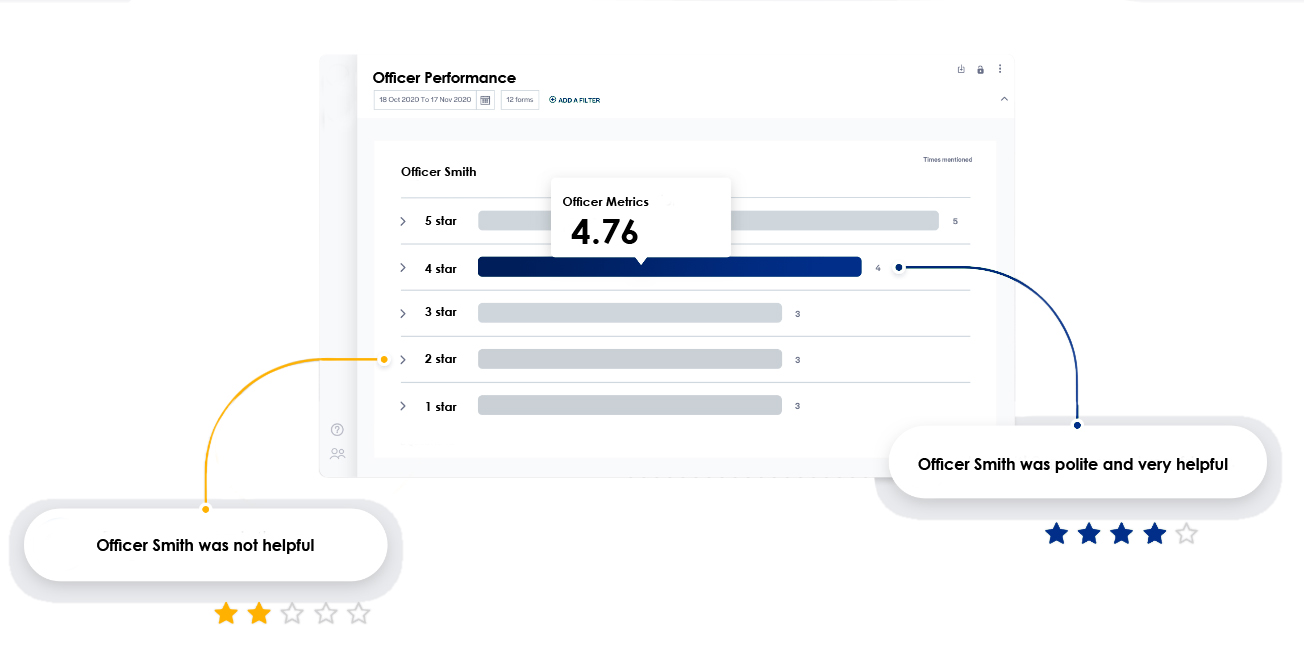Introduction
The effectiveness of a police department is largely influenced by the level of engagement of its officers. Engaged police officer is committed to their job, motivated to perform their duties, and invested in ensuring the safety of the community they serve. Therefore, measuring police officer engagement is essential for the success of any police department. In this blog post, we will discuss the metrics and tools that police departments can use to measure officer engagement and improve their performance.
Engaged police officers are more likely to exhibit positive behaviors such as honesty, integrity, and empathy towards the public they serve. They are also more likely to be proactive in preventing and solving crimes, which can lead to positive outcomes for the community.
Why Measure Police Officer Engagement?
Measuring police officer engagement provides valuable insights into how well a police department is functioning. It can help identify areas where improvement is needed and highlight areas of strength that can be built upon. Additionally, measuring police officer engagement can help to:
•Improve officer retention rates
•Enhance community relations
•Improve police officer job satisfaction
Metrics for Measuring Police Officer Engagement
There are several metrics that can be used to measure police officer engagement, including:
•Attendance rates
•Response times to calls for service
•Number of arrests made
•Number of citations issued
•Number of positive interactions with the public
These metrics are essential to measuring the effectiveness of police officers and their engagement levels. Departments can use these metrics to set benchmarks and goals for their officers, which can lead to improved performance and engagement.
Tools for Measuring Police Officer Engagement
Police departments can use various tools to measure officer engagement, including:
•Officer surveys
•Performance evaluations
•Community feedback
•Body-worn camera footage
These tools can provide valuable insights into the engagement levels of police officers. They can help identify areas of strength and weakness, highlight training needs, and provide feedback to officers on their performance.
Officer Surveys
Officer surveys are an effective tool for measuring police officer engagement. Surveys can be used to gather feedback from officers about their job satisfaction, training needs, and overall engagement levels. Surveys can also be used to gather feedback from citizens about their interactions with police officers.
According to a study conducted by the International Association of Chiefs of Police, officer surveys have been found to be effective in improving officer engagement and job satisfaction. The study found that departments that regularly conducted officer surveys had higher retention rates and lower rates of misconduct.
Performance Evaluations
Performance evaluations are another tool that can be used to measure police officer engagement. Performance evaluations are typically conducted annually and assess an officer’s performance over the past year. The evaluation can include metrics such as attendance, response times, and number of arrests made.
Performance evaluations provide an opportunity for supervisors to provide feedback to officers on their performance and identify areas where improvement is needed. They can also be used to set goals and benchmarks for the officer to work towards.
Community Feedback
Community feedback is an essential tool for measuring police officer engagement. The public’s perception of the police department can provide valuable insights into how well officers are engaging with the community.
Police departments can gather community feedback through various means, including community meetings, social media, and surveys. This feedback can be used to identify areas where improvements are needed and to develop strategies to improve community relations.
Body-Worn Camera Footage
Body-worn camera footage can be used to measure police officer engagement by providing an objective record of officers’ interactions with the public. This footage can be used to assess officers’ communication skills, use of force, and overall professionalism.
Body-worn camera footage can also be used to identify areas where officers need additional training or support. For example, if footage shows an officer exhibiting inappropriate behavior, the department can use this as an opportunity to provide corrective action and training.
Conclusion
Measuring police officer engagement is essential for the success of any police department. By using the right metrics and tools, police departments can identify areas of strength and weakness, set goals and benchmarks for their officers, and improve overall performance and engagement. Officer surveys are an effective tool for measuring engagement, as are performance evaluations, community feedback, and body-worn camera footage. By using these tools, police departments can improve their effectiveness and build better relationships with the communities they serve.
Section 10: References
•International Association of Chiefs of Police. (2013). “Measuring What Matters: A Guide for Police Leaders.” Retrieved from https://www.theiacp.org/sites/default/files/2019-03/measuring-what-matters.pdf.
•Wolfe, S. E., & Piquero, A. R. (2011). “Gauging police officer job satisfaction from an organizational justice perspective.” Justice Quarterly, 28(5), 776-802.
•White, M. D. (2014). “Police officer satisfaction with body-worn cameras.” Police Quarterly, 17(4), 449-471.








